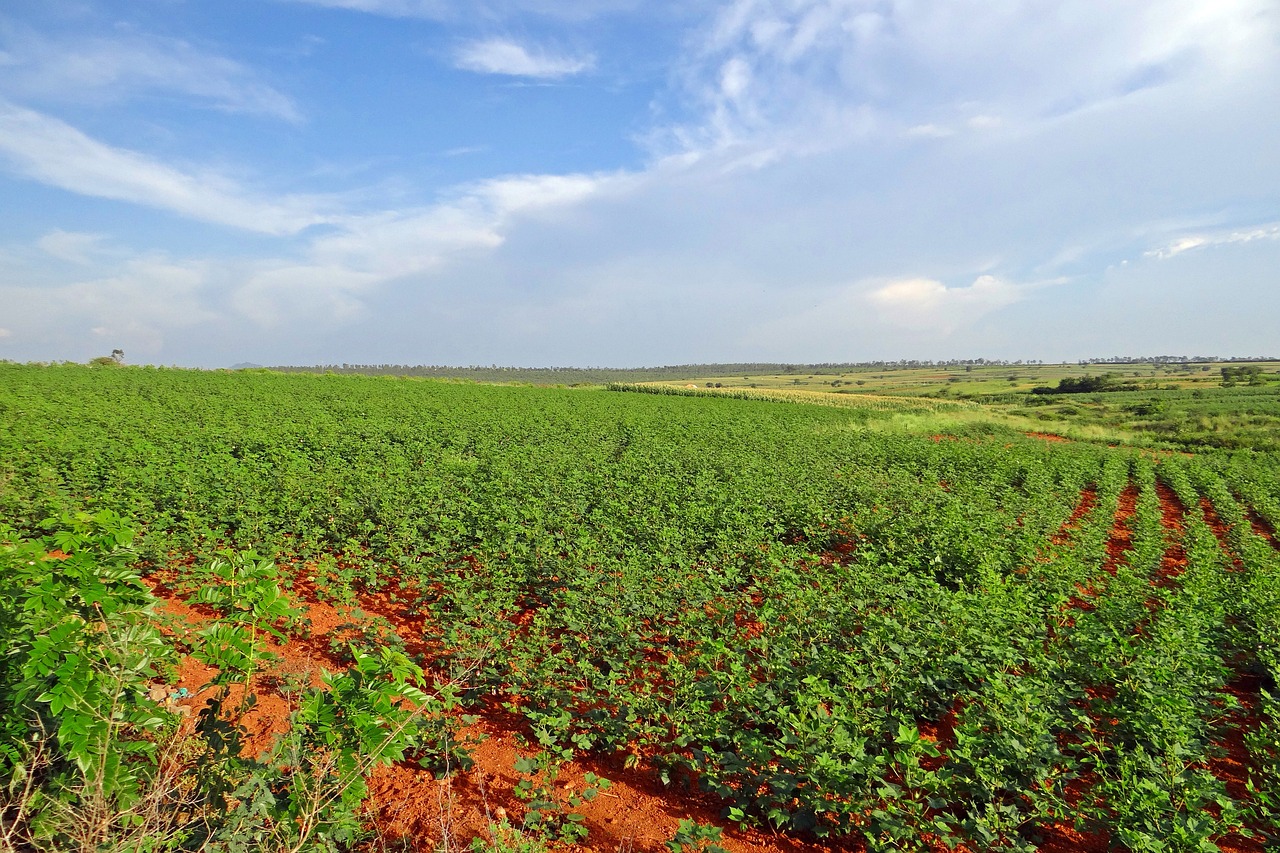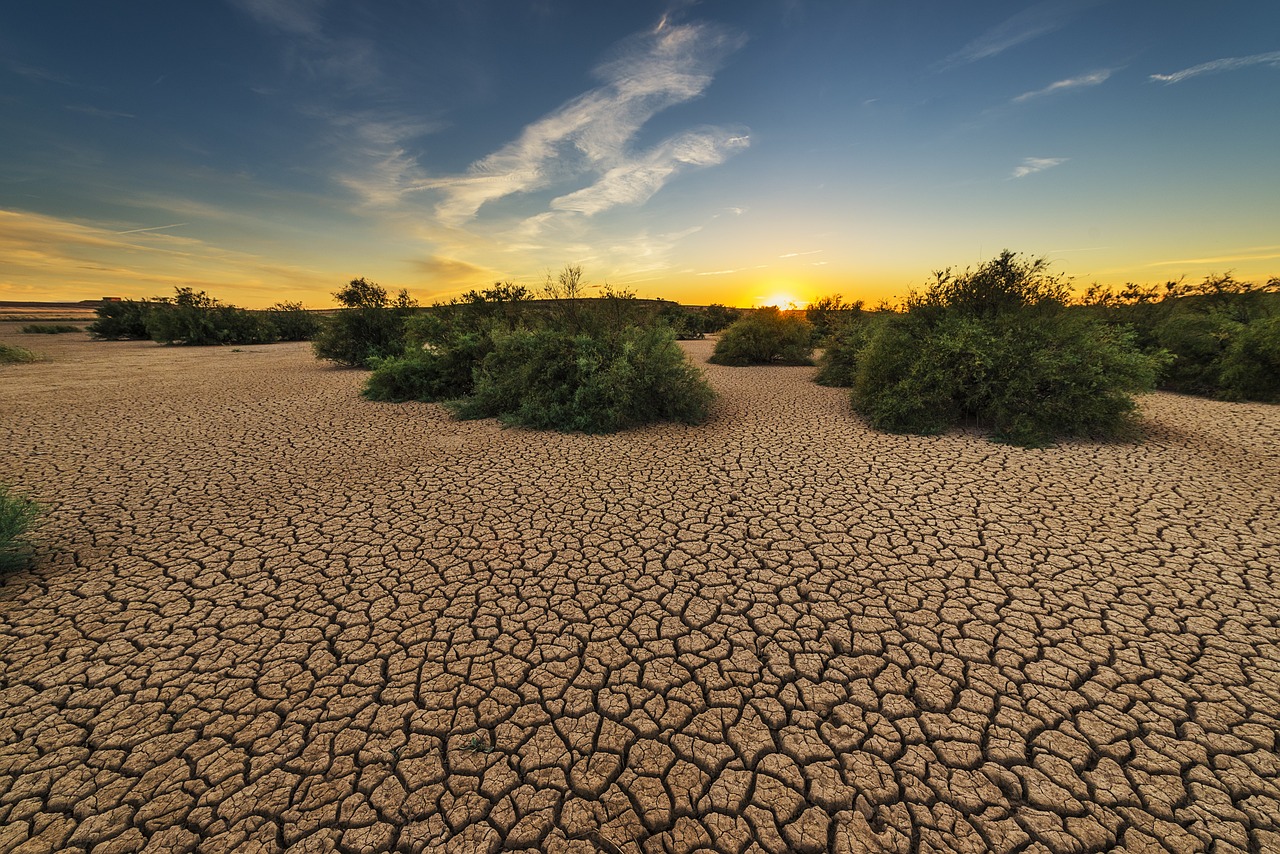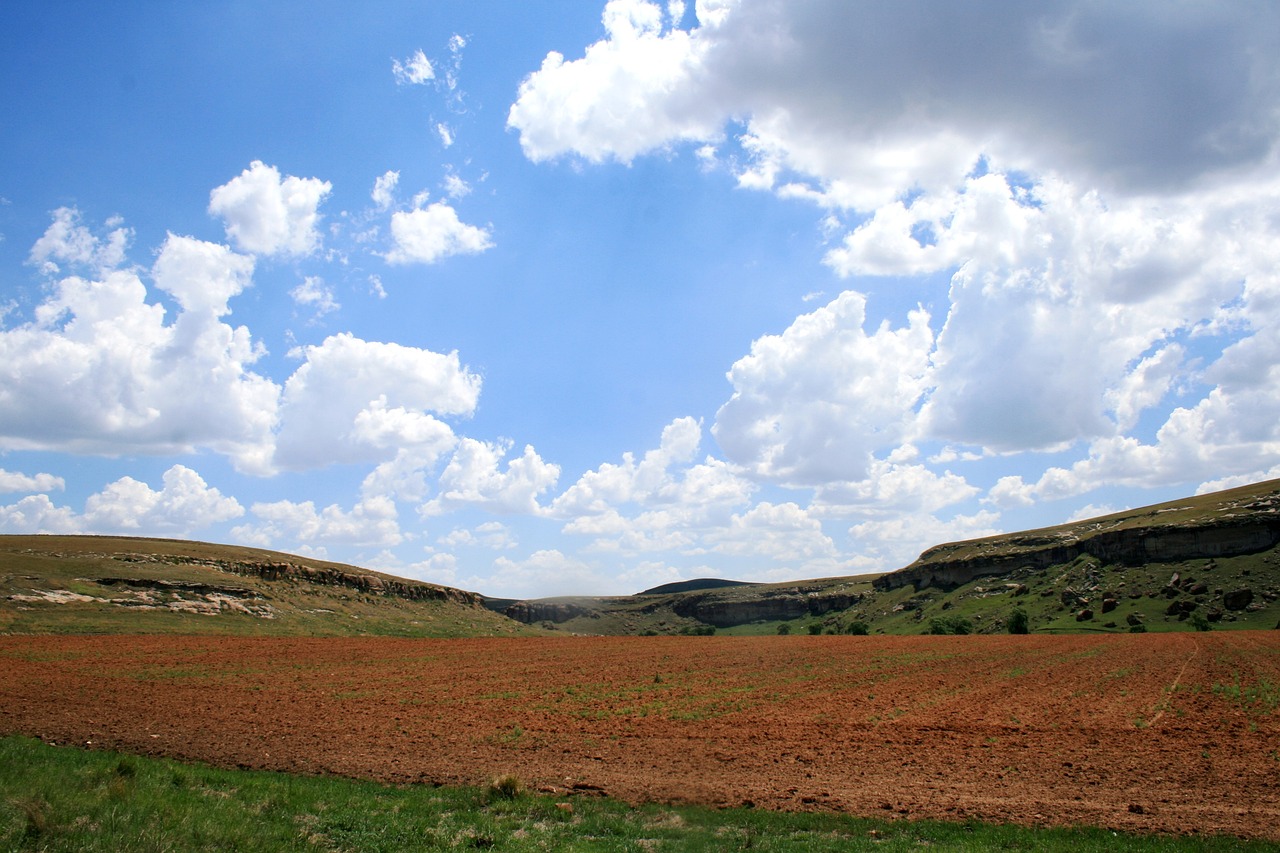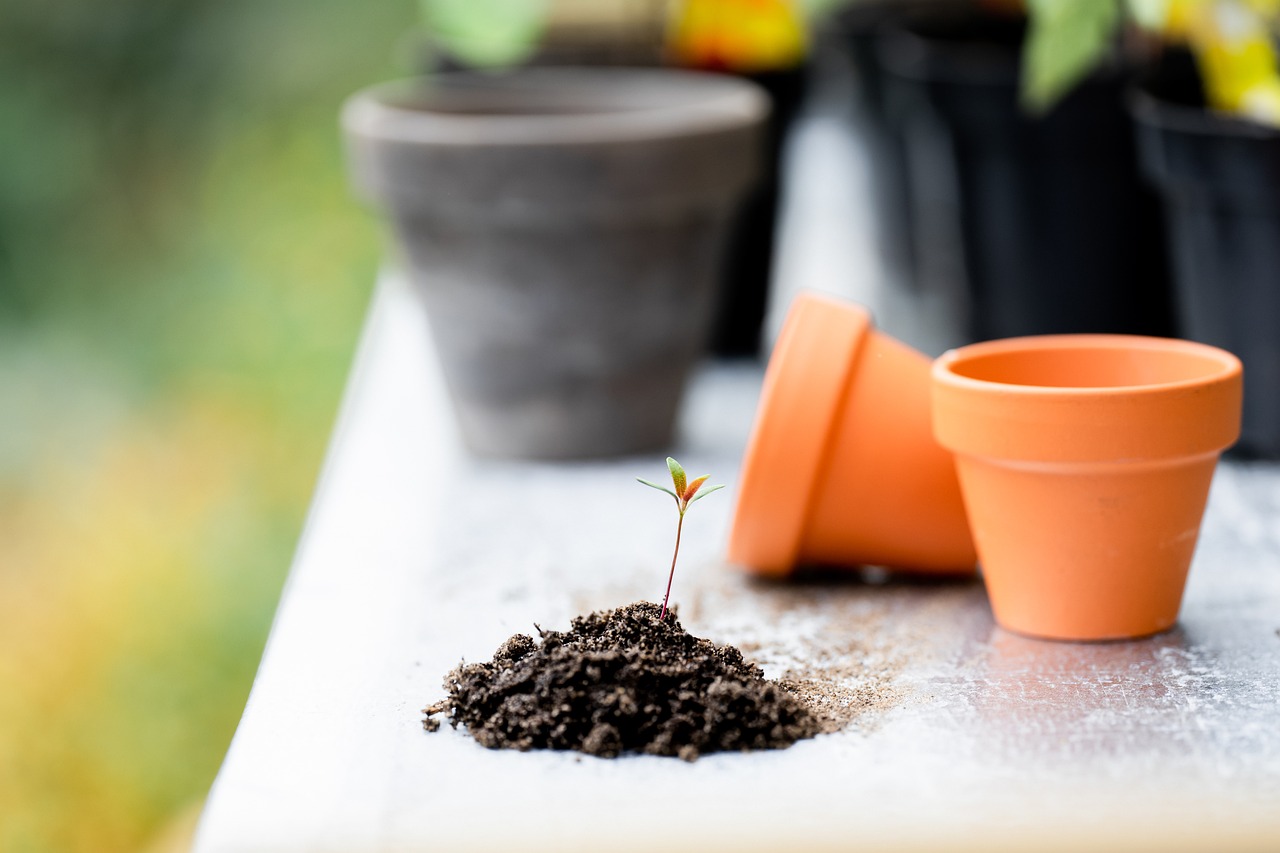The Connection Between Healthy Soils and Biodiversity
The relationship between healthy soils and biodiversity is one of nature's most intricate and vital connections. Imagine soil as the foundation of a magnificent house; without a solid base, the entire structure is at risk of collapse. Similarly, healthy soils are the backbone of thriving ecosystems, supporting a wide array of plants and animals. When we talk about biodiversity, we often think of colorful flowers, diverse wildlife, and lush forests, but the truth is, it all starts underground. Healthy soils provide the essential nutrients that plants need to grow, which in turn sustains the animals that rely on those plants for food and habitat. In essence, the health of our soils directly influences the richness and variety of life on Earth.
So, what makes soil healthy? Healthy soils are rich in organic matter, have a balanced pH, and are teeming with life. They are capable of retaining moisture and nutrients, which are crucial for plant growth. This nutrient-rich environment doesn't just support a few species; it creates a vibrant community of organisms, from the tiniest microbes to the largest mammals. The more diverse the soil life, the more resilient the ecosystem becomes, able to withstand challenges like climate change and pollution.
Moreover, the benefits of healthy soils extend beyond just supporting biodiversity. They play a crucial role in environmental sustainability and resilience. Healthy soils can filter water, reducing pollution and improving water quality, which is vital for both human and ecological health. They also sequester carbon, helping to mitigate climate change. In a world facing environmental challenges, promoting soil health is not just beneficial; it's essential.
In this article, we will delve deeper into the importance of soil health, explore the fascinating world of soil microorganisms, examine the impact of soil health on plant diversity, and discuss the threats that soil faces today. By understanding this connection, we can take meaningful steps towards preserving our planet's biodiversity and ensuring a sustainable future for all living beings.

Importance of Soil Health
Soil health is often overlooked, yet it serves as the foundation for all life on Earth. Imagine soil as a living organism, teeming with activity and complexity. Healthy soils are not just a medium for plants to grow; they are dynamic ecosystems that support a myriad of life forms, from the tiniest microorganisms to the largest mammals. They play a critical role in supporting plant growth, maintaining water quality, and promoting biodiversity. In fact, the health of our soils directly influences the health of our ecosystems.
One of the key characteristics of healthy soils is their ability to retain moisture and nutrients. Think of soil as a sponge; when it's healthy, it can absorb and hold water effectively, preventing runoff and erosion. This moisture retention is vital for plants, especially during dry spells, as it ensures they have access to the water they need to thrive. Additionally, healthy soils are rich in organic matter, which not only provides essential nutrients for plants but also enhances soil structure, allowing for better air circulation and root penetration.
Moreover, healthy soils act as a natural filter for water, improving its quality as it percolates through the ground. This filtration process removes pollutants and excess nutrients, safeguarding our waterways and ensuring a clean supply of water for both humans and wildlife. Without healthy soils, we risk contaminating our water sources and harming aquatic ecosystems.
Another crucial aspect of soil health is its role in fostering biodiversity. Healthy soils are home to a diverse community of organisms, including bacteria, fungi, insects, and larger animals. These organisms interact in complex ways, contributing to nutrient cycling, decomposition, and the overall functioning of the ecosystem. For instance, earthworms aerate the soil, improving its structure, while certain bacteria fix nitrogen, making it available for plant uptake. This intricate web of life not only supports plant health but also creates a resilient ecosystem capable of withstanding environmental changes.
In summary, the importance of soil health cannot be overstated. It is the bedrock upon which our ecosystems thrive, influencing everything from plant growth to water quality and biodiversity. As we face increasing environmental challenges, it is essential to prioritize soil health to ensure a sustainable future for our planet. By understanding and promoting healthy soils, we can create a more balanced and resilient environment for generations to come.

Soil Microorganisms and Biodiversity
Soil is not just dirt; it’s a bustling metropolis of life, teeming with microorganisms that play a pivotal role in maintaining the health of our ecosystems. These tiny yet mighty organisms, including bacteria, fungi, and protozoa, form the backbone of soil health and, consequently, biodiversity. Imagine a city where every resident contributes to the community's well-being—this is precisely how soil microorganisms function. They interact with plants, animals, and even each other to create a vibrant ecosystem that supports life.
Microorganisms are essential for nutrient cycling, which is the process that makes nutrients available to plants. They break down organic matter, releasing essential nutrients back into the soil, which plants can then absorb. Without these microorganisms, our soils would be devoid of the nutrients necessary for plant growth, leading to a decline in plant diversity. Healthy soils are rich in microbial life, which in turn fosters a diverse array of plants, insects, and other organisms. The more diverse the plant life, the more habitats and food sources are available for various species, enhancing overall biodiversity.
To better understand the role of soil microorganisms in biodiversity, let’s take a closer look at some of the key players:
| Microorganism Type | Role in Soil Health |
|---|---|
| Beneficial Bacteria | Decompose organic matter, fix nitrogen, and promote plant growth. |
| Fungi | Form networks that facilitate nutrient exchange between plants and microorganisms. |
| Protozoa | Feed on bacteria and help regulate their populations, contributing to nutrient cycling. |
Among these microorganisms, beneficial bacteria stand out as champions of soil health. They decompose organic materials, breaking them down into simpler compounds that plants can absorb. Additionally, some bacteria can fix nitrogen from the atmosphere, converting it into a form that plants can utilize. This process is crucial because nitrogen is a vital nutrient that supports plant growth and development. When bacteria thrive, they create a nutrient-rich environment that promotes a diverse range of plant species.
On the other hand, fungi play an equally important role in the soil ecosystem. They form extensive networks known as mycorrhizal networks, which connect the roots of plants to one another and to various soil nutrients. This symbiotic relationship allows for the efficient transfer of nutrients, particularly phosphorus, which is often limited in soils. The presence of fungi not only enhances plant health but also increases the resilience of ecosystems, making them better equipped to withstand environmental stressors.
In summary, soil microorganisms are indispensable for maintaining soil health and promoting biodiversity. They create a complex web of interactions that supports plant growth, nutrient cycling, and overall ecosystem stability. By understanding and appreciating the roles of these tiny organisms, we can better appreciate the intricate connections that sustain life on our planet.
- What are soil microorganisms? Soil microorganisms are tiny living organisms, including bacteria, fungi, and protozoa, that inhabit the soil and play crucial roles in nutrient cycling and soil health.
- How do microorganisms affect plant growth? Microorganisms help decompose organic matter, fix nitrogen, and facilitate nutrient exchange, all of which promote healthy plant growth.
- Why is biodiversity important for soil health? Biodiversity enhances ecosystem resilience, providing various species with habitats and food sources, which contributes to the overall health of the environment.
- How can we promote soil microorganisms? Practices such as organic farming, reduced chemical use, and conservation tillage can help enhance the populations of beneficial soil microorganisms.

Types of Soil Microorganisms
Soil is a bustling metropolis of life, teeming with a variety of microorganisms that play crucial roles in maintaining its health and functionality. These tiny organisms, although often overlooked, are the unsung heroes of our ecosystems. They can be broadly categorized into two main groups: bacteria and fungi, each with its unique functions and contributions to soil health and biodiversity.
Bacteria are the most abundant microorganisms in the soil, with estimates suggesting there can be up to several billion bacteria in just a teaspoon of healthy soil. These microscopic powerhouses are essential for various processes, including nutrient cycling, organic matter decomposition, and even the fixation of atmospheric nitrogen, which is vital for plant growth. By breaking down complex organic materials, bacteria release nutrients that plants can easily absorb, thus supporting a diverse array of plant species and, consequently, the animals that rely on those plants for food.
On the other hand, fungi, particularly mycorrhizal fungi, form intricate networks within the soil. These networks connect with plant roots, facilitating a mutualistic relationship where plants provide carbohydrates to the fungi, while the fungi enhance nutrient and water uptake for the plants. This relationship not only boosts plant health but also increases plant diversity by allowing a wider range of species to thrive in nutrient-poor soils. In fact, studies have shown that areas with rich fungal networks often support a greater variety of plant life compared to those with fewer fungal connections.
In addition to bacteria and fungi, other microorganisms such as archaea and protozoa also play significant roles in soil health. Archaea, often found in extreme environments, contribute to nutrient cycling and organic matter decomposition. Protozoa, on the other hand, help regulate bacterial populations and contribute to nutrient availability by consuming bacteria and releasing nutrients back into the soil. Together, these microorganisms create a complex web of interactions that support the overall health of the soil ecosystem.
To sum it up, the diversity of soil microorganisms is vital for maintaining healthy soils and promoting biodiversity. The interplay between bacteria, fungi, and other microorganisms not only enhances soil fertility but also ensures that ecosystems remain resilient and capable of supporting a wide variety of life forms. Understanding these relationships can help us appreciate the intricate balance of nature and the importance of protecting our soils.

Beneficial Bacteria
When we talk about the health of our soils, we can't overlook the incredible role that play. These microscopic organisms are like the unsung heroes of the ecosystem, tirelessly working beneath our feet to support plant life and, consequently, the entire food web. Imagine a bustling city, where every citizen has a role to play in keeping the community thriving—that's what beneficial bacteria do for the soil.
One of the most important jobs of these bacteria is to decompose organic matter. When plants and animals die, or when we add compost to our gardens, beneficial bacteria spring into action, breaking down this organic material into simpler compounds. This process not only enriches the soil with nutrients but also helps to improve soil structure, making it more porous and better able to retain water. The result? A healthier environment for plants to grow and flourish.
Additionally, beneficial bacteria are key players in the nitrogen cycle. Certain types of bacteria can fix atmospheric nitrogen, converting it into a form that plants can readily absorb and use. This is crucial because nitrogen is a vital nutrient that supports healthy plant growth. Without these bacteria, our soils would be much poorer, and we would see a significant decline in plant diversity.
These bacteria also form symbiotic relationships with plant roots. For instance, some bacteria help plants absorb nutrients more effectively, while the plants provide the bacteria with sugars produced through photosynthesis. It's a classic example of a mutualistic relationship—both parties benefit, leading to a more robust ecosystem overall.
Moreover, beneficial bacteria can enhance the resilience of ecosystems. By promoting healthy plant growth and improving soil quality, they help create a more stable environment that can withstand environmental stresses such as drought or disease. In essence, the presence of these bacteria can be a game-changer for biodiversity, as they contribute to a thriving ecosystem where various species can coexist.
In summary, the role of beneficial bacteria in soil health is nothing short of remarkable. They are essential for nutrient cycling, soil structure improvement, and fostering plant diversity. By ensuring that our soils are rich in these microorganisms, we can support a vibrant and diverse ecosystem that benefits all forms of life. So next time you dig into the soil, remember the tiny heroes working tirelessly beneath the surface!
- What are beneficial bacteria? Beneficial bacteria are microorganisms that promote soil health by decomposing organic matter, fixing nitrogen, and enhancing nutrient absorption for plants.
- How do beneficial bacteria improve soil health? They decompose organic materials, enrich the soil with nutrients, improve soil structure, and form symbiotic relationships with plant roots.
- Why are beneficial bacteria important for biodiversity? They support diverse plant species by providing essential nutrients, which in turn sustains a wide range of animal life in the ecosystem.
- Can soil health be restored if it has been degraded? Yes, practices like organic farming, composting, and reducing chemical use can help restore soil health and promote beneficial bacteria.

Fungi and Soil Networks
Fungi are often the unsung heroes of the soil ecosystem, weaving intricate networks beneath our feet that play a crucial role in maintaining soil health and promoting biodiversity. These fascinating organisms form what is known as mycorrhizal networks, which are essentially underground highways connecting different plants and trees. Imagine a bustling city where every building is linked by a series of roads—this is how fungi operate within the soil. Through these networks, fungi facilitate nutrient exchange, allowing plants to share resources like water and essential minerals.
One of the most remarkable aspects of these fungal networks is their ability to enhance nutrient availability. For instance, fungi can break down organic matter, releasing nutrients that plants can readily absorb. This process not only supports the individual plants but also fosters a diverse community of flora. The presence of diverse plant species, in turn, attracts various animal species, creating a vibrant ecosystem that thrives on interdependence.
Moreover, fungi are pivotal in carbon cycling. They help sequester carbon in the soil, contributing to climate regulation and improving soil structure. Healthy soils, enriched by fungal activity, are better at retaining water and resisting erosion, which is essential for sustaining plant life and, consequently, the entire ecosystem. Without these fungal networks, soils would struggle to maintain their health, leading to diminished plant diversity and a decline in overall biodiversity.
To illustrate the importance of fungi in soil networks, consider the following table that highlights key roles they play:
| Role of Fungi | Description |
|---|---|
| Nutrient Cycling | Fungi decompose organic matter, releasing nutrients back into the soil for plant use. |
| Water Retention | Fungal networks improve soil structure, enhancing its ability to hold water. |
| Plant Communication | Fungi facilitate communication between plants, allowing them to share resources and warn each other of pests. |
| Carbon Sequestration | Fungi help store carbon in the soil, mitigating climate change effects. |
In conclusion, the relationship between fungi and soil networks is a testament to the complexity and interconnectivity of nature. By nurturing these fungal networks, we can promote healthier soils, which in turn support a rich tapestry of biodiversity. Protecting and enhancing these vital systems is not just beneficial for plants and animals, but essential for the health of our planet as a whole.
- What are mycorrhizal networks? Mycorrhizal networks are underground connections formed by fungi that link the roots of different plants, facilitating nutrient exchange and communication.
- How do fungi improve soil health? Fungi improve soil health by decomposing organic matter, enhancing nutrient availability, and improving soil structure, which aids in water retention.
- Can fungi help combat climate change? Yes, fungi play a role in carbon sequestration, helping to store carbon in the soil and mitigating the effects of climate change.

Impact of Soil Health on Plant Diversity
Soil health is not just a buzzword; it’s the foundation upon which diverse ecosystems thrive. When we talk about the , we’re diving into a world where nutrient-rich, well-structured soils act like a buffet for plants, offering the essential elements they need to flourish. Healthy soils are teeming with life, and this vibrant community directly influences the variety of plant species that can grow in a given area. Think of soil as a living organism, where every component plays a crucial role in fostering a rich tapestry of plant life.
One of the key ways that healthy soil promotes plant diversity is through its ability to retain moisture and nutrients. When soil is rich in organic matter, it has better water-holding capacity, which means plants can access the water they need, even during dry spells. This resilience allows a wider range of plant species to coexist, from drought-resistant succulents to lush, moisture-loving ferns. Without healthy soils, many of these plants would struggle to survive, leading to a decline in biodiversity.
Moreover, healthy soils provide the perfect habitat for a myriad of soil organisms, each playing a unique role in nutrient cycling. For instance, beneficial bacteria and fungi break down organic materials, releasing nutrients back into the soil. This process is crucial for plant growth and supports diverse plant communities. In fact, studies have shown that areas with higher soil microbial diversity often correlate with increased plant species richness. It’s like having a well-oiled machine where every part works in harmony to produce a thriving ecosystem.
To illustrate this connection, consider the following table that highlights the relationship between soil health indicators and plant diversity:
| Soil Health Indicator | Impact on Plant Diversity |
|---|---|
| Organic Matter Content | Increases nutrient availability and water retention, supporting a variety of plants. |
| Soil pH | Affects nutrient availability; optimal pH levels promote diverse plant growth. |
| Microbial Diversity | Enhances nutrient cycling and plant health, leading to greater species richness. |
| Soil Structure | Improved aeration and drainage support a wider range of plant roots. |
Additionally, the interplay between soil health and plant diversity can be observed in various ecosystems. For instance, forests with rich, loamy soils often support a wide range of tree species, while arid regions with poor soil health may only sustain a few hardy plants. This variation highlights the importance of maintaining healthy soils to ensure that our ecosystems remain resilient and diverse.
In summary, the impact of soil health on plant diversity is profound and multifaceted. Healthy soils not only provide the necessary nutrients and conditions for plants to thrive but also support a vibrant community of microorganisms that enhance overall ecosystem health. By prioritizing soil health, we’re not just nurturing the plants we see above ground; we’re safeguarding the entire web of life that depends on these vital resources.
- What are the signs of healthy soil? Healthy soil typically has a rich, dark color, a crumbly texture, and a distinct earthy smell. It also supports a variety of organisms, including earthworms and beneficial insects.
- How can I improve my soil health? You can improve soil health by adding organic matter such as compost, practicing crop rotation, minimizing tillage, and reducing chemical inputs.
- Why is plant diversity important? Plant diversity is crucial for ecosystem resilience, providing habitat for wildlife, improving soil health, and contributing to overall environmental stability.

Threats to Soil Health
Soil health is under constant threat from a variety of human activities, which can lead to significant environmental consequences. These threats not only degrade the quality of the soil but also disrupt the delicate balance of ecosystems that depend on healthy soils for survival. One of the most pressing issues is pollution, which can stem from industrial waste, agricultural runoff, and even urban development. When harmful chemicals seep into the ground, they can alter the soil's natural composition, making it inhospitable for the microorganisms that play a crucial role in nutrient cycling.
Another major threat comes from deforestation. As we clear forests for agriculture or urbanization, we strip the land of its protective cover, leading to soil erosion and loss of fertility. The absence of trees means less organic matter is returned to the soil, which is vital for maintaining its health. This loss not only affects soil quality but also diminishes biodiversity, as many species rely on forest ecosystems for their habitat.
Moreover, unsustainable agricultural practices pose a significant risk to soil health. Techniques such as monoculture—where only one type of crop is grown repeatedly—can deplete the soil of essential nutrients, leading to a decline in soil fertility over time. The excessive use of chemical fertilizers and pesticides can further exacerbate the problem by disrupting the natural microbial communities that are essential for a thriving ecosystem.
To illustrate the impact of these threats, consider the following table that summarizes the major threats to soil health and their consequences:
| Threat | Consequences |
|---|---|
| Pollution | Reduced microbial diversity, contamination of crops, and impaired water quality |
| Deforestation | Soil erosion, loss of organic matter, and habitat destruction |
| Unsustainable Agriculture | Nutrient depletion, soil compaction, and increased vulnerability to pests and diseases |
It's alarming to think about how these threats collectively undermine the health of our soils and the biodiversity that depends on them. As soil quality declines, so does the ability of ecosystems to provide essential services, such as clean water, food production, and carbon storage. The implications are far-reaching, affecting not just the environment but also human health and well-being.
In conclusion, recognizing and addressing these threats is crucial for the preservation of soil health. By implementing sustainable practices and reducing pollution, we can work towards restoring our soils and, in turn, supporting the rich biodiversity that thrives within them.
- What are the signs of unhealthy soil? Unhealthy soil may show signs like poor drainage, lack of vegetation, and the presence of pollutants.
- How can I improve soil health in my garden? You can improve soil health by adding organic matter, practicing crop rotation, and reducing chemical use.
- Why is biodiversity important for soil health? Biodiversity promotes a variety of organisms that contribute to nutrient cycling, pest control, and overall ecosystem resilience.

Pollution and Soil Degradation
Pollution is one of the most significant threats to soil health, leading to a cascade of negative effects that can diminish biodiversity and disrupt ecological balance. When we think of pollution, we often picture smog-filled skies or litter-strewn landscapes. However, the silent degradation of our soils due to chemical runoff, waste disposal, and industrial activities is equally alarming. Soil degradation occurs when the natural structure and composition of soil are altered, often resulting in reduced fertility and compromised ecosystems.
The impact of pollution on soil can be profound. Chemicals such as pesticides, herbicides, and heavy metals can seep into the ground, altering the delicate balance of microorganisms that are essential for nutrient cycling. For instance, when harmful substances contaminate the soil, they can lead to:
- Loss of Soil Fertility: Essential nutrients are depleted, making it difficult for plants to grow and thrive.
- Reduced Microbial Diversity: Beneficial microorganisms that support plant health and soil structure can be killed off, leading to a decline in biodiversity.
- Water Contamination: Polluted soil can leach harmful substances into groundwater, affecting not just plants but entire ecosystems.
Moreover, the degradation of soil health can create a vicious cycle. Poor soil leads to weak plants, which in turn can’t support the diverse wildlife that relies on them. It's like a house of cards; remove one card, and the whole structure may come tumbling down. As soil quality declines, we also see a rise in invasive species that can thrive in degraded conditions, further pushing out native flora and fauna.
To put the effects of pollution into perspective, consider the following table that outlines the types of pollutants and their specific impacts on soil health:
| Type of Pollutant | Impact on Soil Health |
|---|---|
| Pesticides | Reduces microbial diversity and disrupts natural pest control. |
| Heavy Metals | Toxic to many soil organisms, leading to decreased fertility and biodiversity. |
| Plastic Waste | Physical barriers to root growth and microbial activity, leading to soil compaction. |
| Nutrient Runoff | Leads to algal blooms in waterways, which can further harm aquatic ecosystems. |
Addressing soil pollution and degradation requires concerted efforts from individuals, communities, and policymakers. Implementing sustainable practices such as organic farming, crop rotation, and responsible waste management can help mitigate these issues. By being proactive in protecting our soils, we can foster healthier ecosystems that support a rich tapestry of life.
Q1: What are the main causes of soil pollution?
A1: The primary causes of soil pollution include industrial waste disposal, agricultural chemicals, heavy metal contamination, and improper waste management practices.
Q2: How can I contribute to reducing soil pollution?
A2: You can reduce soil pollution by practicing sustainable gardening, using organic fertilizers, reducing plastic use, and supporting local initiatives aimed at soil conservation.
Q3: What are the signs of degraded soil?
A3: Signs of degraded soil include reduced plant growth, poor water retention, presence of contaminants, and a noticeable decline in soil organisms.
Q4: Is soil pollution reversible?
A4: Yes, soil pollution can be reversed through remediation techniques, organic practices, and restoring natural ecosystems.

Unsustainable Agricultural Practices
In today's world, the methods we use to cultivate our crops can have a profound impact on the health of our soils and, consequently, on biodiversity. Unsustainable agricultural practices, such as monoculture and excessive chemical use, are leading causes of soil degradation. When farmers focus on growing a single crop year after year, they strip the soil of essential nutrients and disrupt the delicate balance of microorganisms that thrive in a healthy ecosystem. This practice not only diminishes soil health but also reduces the variety of plants that can grow in that area, creating a barren landscape devoid of life.
Moreover, the over-reliance on chemical fertilizers and pesticides can introduce harmful substances into the soil. These chemicals can kill beneficial soil organisms that play a critical role in nutrient cycling and organic matter decomposition. Imagine a vibrant community of tiny creatures working tirelessly to break down organic material and enrich the soil. When these creatures are wiped out by toxic chemicals, the soil becomes less fertile and less capable of supporting diverse plant and animal life. The result? A decline in biodiversity that can have cascading effects throughout the ecosystem.
To further illustrate the impact of these practices, consider the following table that summarizes the effects of unsustainable agricultural methods on soil health and biodiversity:
| Unsustainable Practice | Impact on Soil Health | Impact on Biodiversity |
|---|---|---|
| Monoculture | Depletes soil nutrients, reduces soil structure | Reduces plant species diversity, affects animal habitats |
| Excessive Chemical Use | Contaminates soil, kills beneficial microorganisms | Decreases overall ecosystem health, disrupts food webs |
| Deforestation for Agriculture | Leads to soil erosion, loss of organic matter | Destroys habitats, threatens wildlife populations |
These practices not only threaten the immediate environment but also jeopardize future agricultural productivity. The soil, once a thriving ecosystem, becomes a lifeless medium that can no longer support diverse plant and animal life. To combat these issues, it's crucial for farmers and policymakers to shift towards more sustainable practices. Techniques such as crop rotation, organic farming, and integrated pest management can help restore soil health and promote biodiversity, ensuring that our ecosystems remain resilient and productive for generations to come.
- What are the main unsustainable agricultural practices? Unsustainable practices include monoculture, excessive use of chemical fertilizers and pesticides, and deforestation for agricultural expansion.
- How do these practices affect soil health? They lead to nutrient depletion, soil erosion, and contamination, making the soil less fertile and less capable of supporting diverse ecosystems.
- What are some sustainable alternatives? Sustainable practices include crop rotation, organic farming, conservation tillage, and integrated pest management.
- Why is biodiversity important in agriculture? Biodiversity contributes to ecosystem resilience, helps maintain soil health, and supports a variety of species that can benefit agricultural productivity.

Promoting Soil Health for Biodiversity
Enhancing soil health is not just a noble endeavor; it is a necessity for sustaining the intricate web of life that thrives above and below the ground. When we talk about promoting soil health, we're diving into a world where microorganisms, plants, and animals all play a crucial role in maintaining biodiversity. So, how can we actively contribute to the health of our soils? Let’s explore some practical strategies that can make a significant difference.
One of the most effective ways to promote soil health is through organic farming. This method emphasizes the use of natural fertilizers, such as compost and manure, which not only enrich the soil but also enhance its structure and water-holding capacity. By avoiding synthetic chemicals, organic farming fosters a thriving community of soil organisms, which in turn supports a diverse range of plant life. Imagine a garden where every plant is not just surviving but flourishing, thanks to the rich, organic matter that feeds them!
Another powerful approach is implementing conservation practices. These practices include techniques like crop rotation, cover cropping, and reduced tillage. Each of these methods plays a vital role in maintaining soil structure and preventing erosion. For instance, cover crops, which are planted during the off-season, protect the soil from erosion and provide additional nutrients when they decompose. It's like giving the soil a cozy blanket that nourishes it while also protecting it from harsh weather conditions.
Moreover, engaging in community initiatives can amplify efforts to promote soil health. Participating in local gardening clubs or community-supported agriculture (CSA) programs not only enhances your own understanding of sustainable practices but also fosters a sense of community. When people come together to share knowledge and resources, the impact on soil health and biodiversity can be exponential. Consider organizing workshops where community members can learn about composting, soil testing, and sustainable gardening techniques. It’s a fantastic way to spread the word and make a tangible difference!
Lastly, education plays a crucial role in promoting soil health. By raising awareness about the importance of healthy soils and their connection to biodiversity, we can inspire more individuals to take action. Schools, community centers, and local governments can host educational programs that highlight the significance of soil conservation. Imagine children learning about the wonders of soil and its inhabitants, growing up to be stewards of the earth! This generational shift in perspective can lead to lasting changes in how we treat our land.
In summary, promoting soil health is a multi-faceted approach that requires collaboration, education, and sustainable practices. By embracing organic farming, conservation techniques, community initiatives, and educational outreach, we can create a healthier environment that supports biodiversity. Remember, every small action counts, and together, we can cultivate a thriving ecosystem that benefits all living beings.
- What are the signs of healthy soil? Healthy soil typically has a rich, dark color, a crumbly texture, and is full of life, including earthworms and microorganisms.
- How can I improve my garden soil? You can improve your garden soil by adding organic matter like compost, practicing crop rotation, and minimizing chemical use.
- Why is biodiversity important? Biodiversity is crucial for ecosystem resilience, providing essential services like pollination, nutrient cycling, and pest control.
- Can I promote soil health in urban areas? Absolutely! Urban gardening, community gardens, and green roofs are excellent ways to enhance soil health in cities.
Frequently Asked Questions
- What is the importance of healthy soils for biodiversity?
Healthy soils are the backbone of vibrant ecosystems. They provide essential nutrients and a habitat for various organisms, from plants to microorganisms. When soil is rich and well-maintained, it supports a wide array of plant species, which in turn fosters a diverse range of animal life. Think of healthy soil as a buffet for biodiversity, offering everything needed for life to thrive!
- How do soil microorganisms contribute to soil health?
Soil microorganisms, including bacteria and fungi, are like the unsung heroes of the ecosystem. They break down organic matter, recycle nutrients, and enhance soil structure, making it more fertile. This microbial activity is crucial for nutrient cycling, which directly supports plant health and biodiversity. Without these tiny organisms, our soils would be less productive and less capable of supporting life.
- What are some common threats to soil health?
Soil health faces a variety of threats, primarily from human activities. Pollution from chemicals, deforestation, and unsustainable farming practices like monoculture are major culprits. These actions can lead to soil degradation, reducing its ability to support life and ultimately harming biodiversity. It's like trying to grow a garden in a toxic wasteland—nothing can thrive!
- How can we promote soil health to enhance biodiversity?
Promoting soil health is essential for nurturing biodiversity. Simple practices like organic farming, crop rotation, and conservation tillage can significantly improve soil quality. By avoiding harmful chemicals and focusing on sustainable methods, we can create a healthier environment that supports a diverse range of life forms. It's about working with nature, not against it!
- What role do fungi play in soil ecosystems?
Fungi are vital players in soil ecosystems, forming extensive networks that facilitate nutrient exchange between plants and microorganisms. They help decompose organic matter, making nutrients available for plants while also improving soil structure. Think of fungi as the internet of the soil—connecting different organisms and enabling them to share resources!



















